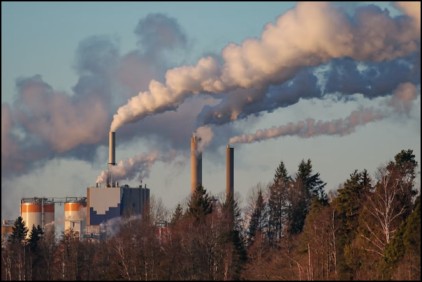Table of Contents
Describe A Place You Visited Where The Air Was Polluted

Cue Card
You should say:
- Where the place is
- When you visited it
- Why the air was not good
- And explain how you felt about the place
Sample Answer
Introduction:
Well, pollution, is probably the worst nightmare for everyone living in the city. And the most polluted city I have been to, has to be Shijiazhuang, in Hebei province. It is obviously an unpleasant trip back then. Say, last summer, my parents took me to Beijing for vacation. But on our way, dad had to meet a customer, so we stopped in Shijiazhuang halfway. When dad was meeting the customer, my mum and I were left in the hotel waiting.
Why the air is polluted:
Our hotel was situated in the industrial area, which was surrounded by large production plants and towering chimneys, from which thick and dusty smoke was rising up. The air was contaminated by emissions from the factories and we were afraid that if we opened the window. the air would chock us. The smokey sky was dark gray, with poor visibility. In the streets, there were only a few people walking in a hurry, mostly wearing masks. We were stricken by the outrageous air condition and left the city shortly afterward.
How you felt about the place:
It is the most polluted place I have ever been to. It made me realize that if we don’t stop letting off waste air, our world will become hell. So I do hope the government would carry out policies to improve the condition of the air. I am sure they must have done something right now. Because quite frankly, the pollution there was appalling, and even survival would become a problem then.
Part 3
1. is there more pollution now than in the past?
In recent times, it has become increasingly evident that air pollution has become an increasingly alarming problem.
The proliferation of industrialization, urbanization, and an ever-growing population have all contributed to the rise in air pollution levels.
Furthermore, the widespread use of fossil fuels for energy production, transportation, and other purposes has added to the problem.
In comparison to the past, it can be safely said that the levels of air pollution have risen significantly and the negative impacts on our health and the environment have become more pronounced.
2. In what ways can air pollution be reduced effectively?
There are several ways to reduce air pollution effectively.
Governments, businesses, and individuals can all play a role in reducing the emissions that contribute to air pollution.
For example, implementing stricter regulations on industry and transportation can help to reduce emissions.
Encouraging the use of alternative forms of energy such as wind and solar power can also help to reduce emissions.
Promoting public transportation and reducing the number of cars on the road is also another way to reduce air pollution.
Lastly, individuals can reduce their own impact on air pollution by using environmentally-friendly products, conserving energy, and reducing their use of fossil fuels.
3. Do you think the city is cleaner or dirtier than the countryside? Why?
it is difficult to generalize as to whether cities are cleaner or dirtier than the countryside, as this can vary depending on the specific location.
However, cities tend to have higher levels of air pollution due to the concentration of industry and transportation, whereas rural areas tend to have lower levels of pollution.
In cities, the pollution levels can be exacerbated by the large numbers of people, vehicles, and buildings that trap and release pollutants into the air.
On the other hand, the countryside is generally less densely populated and therefore, there are fewer sources of pollution.
4. What can factories and power plants do to reduce pollutants?
Factories and power plants are some of the largest contributors to air pollution, and it is important that they take steps to reduce their emissions.
This can be achieved through a variety of means, such as investing in cleaner technologies, upgrading equipment to be more energy-efficient, and switching to alternative energy sources.
Additionally, implementing processes to reduce waste and emissions, such as recycling and waste management, can also help to reduce pollutants.
Implementing monitoring systems to track and reduce emissions is another step that factories and power plants can take to reduce their impact on the environment.
5. Do you think many companies have been forced to reduce pollutants?
In recent years, there has been increasing pressure on companies to reduce their emissions and adopt more environmentally-friendly practices.
Governments have implemented stricter regulations on industry and transportation to reduce emissions and have provided incentives for companies to adopt cleaner technologies.
Furthermore, consumers have become more environmentally conscious and are increasingly demanding products and services that are more environmentally friendly.
As a result, many companies have been forced to reduce their pollutants in order to meet these demands and stay competitive in the market.
6. Do you think the wind has any effect on pollution? How?
Wind can play a role in reducing air pollution by helping to disperse pollutants and move them away from populated areas.
The movement of air through the atmosphere helps to mix and dilute pollutants, reducing their concentration in the air.
In some cases, wind can also transport pollutants from one area to another, causing air pollution to become a regional or even global issue.
In general, however, wind can help to reduce air pollution by moving it away from populated areas and reducing its concentration in the air.
Some IELTS Speaking part 2 cue-cards you may like :
- (2024) Describe A Film Character Played By An Actor Or Actress Whom You Admire
- (2024) Describe An Advertisement You Have Seen But You Didn’t Like
- (2024) Describe An Interesting Old Person You Met – IELTS Speaking Part 2
- (2024) Describe a Historical Period/Moment You Would Like To Learn More About – IELTS Cue Card
- (Update 2024) Describe a Person Who Inspired You to do Something Interesting IELTS Cue Card
Credits
Image : Photo by Sergey Semin on Unsplash


